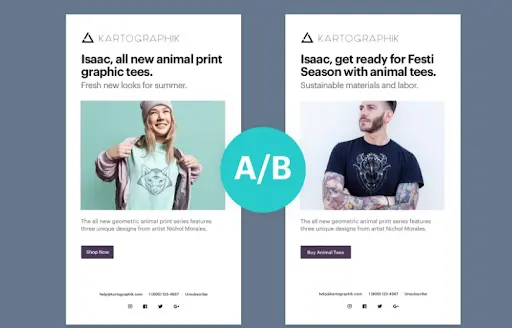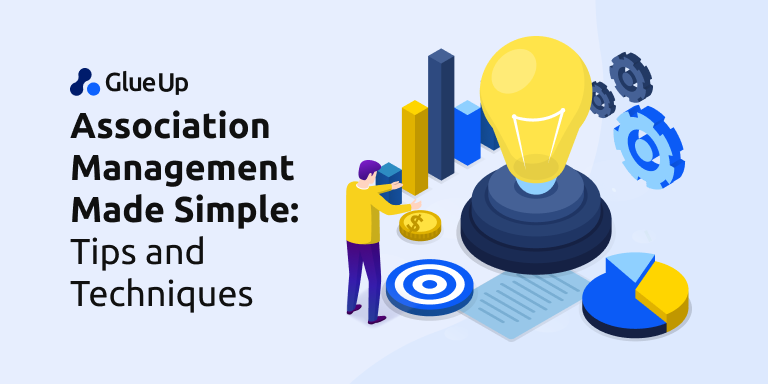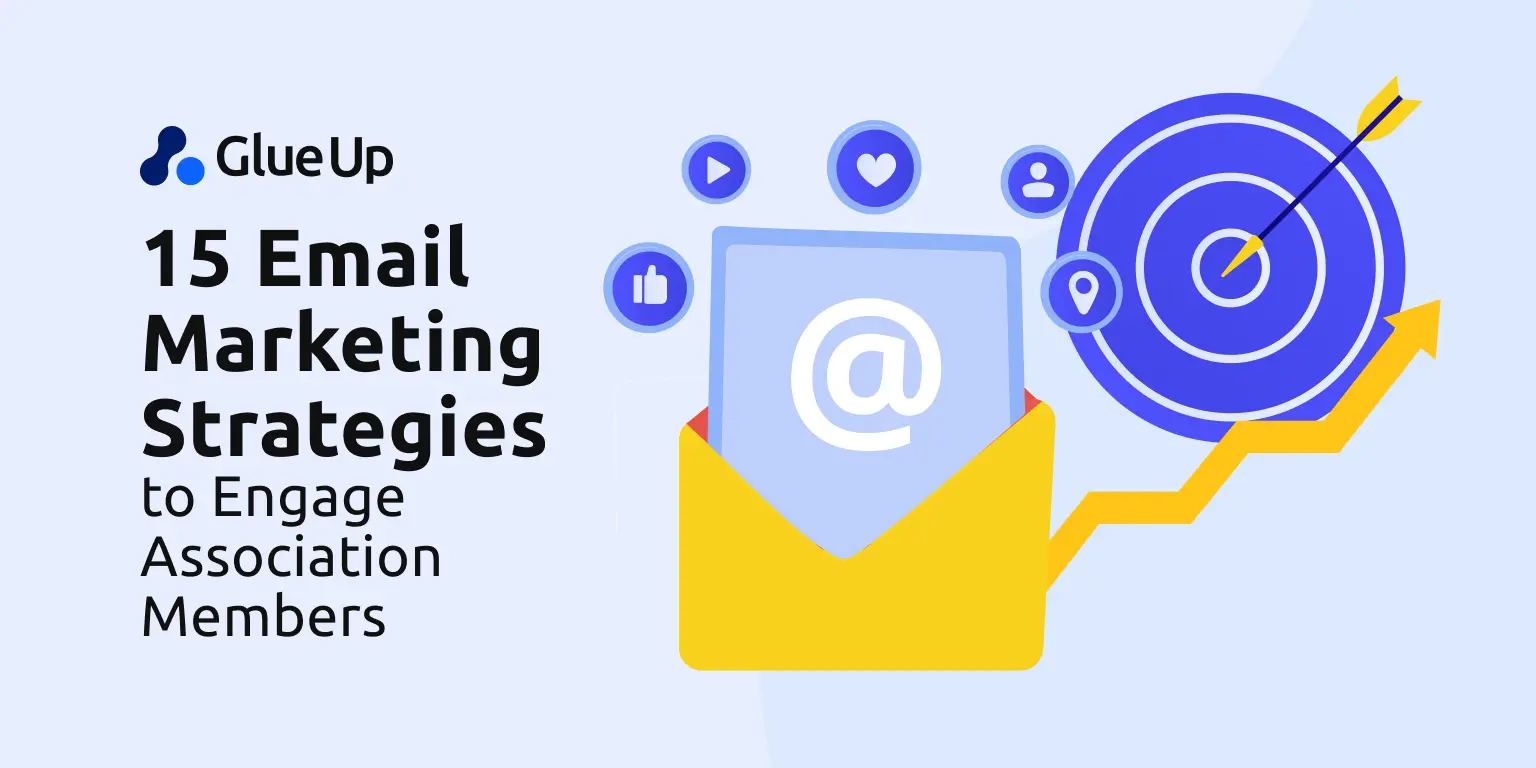
Last Updated: April 25, 2024
Generic email marketing strategies do not always provide the best results. You must tweak these tried and tested email tactics to find out what works for your business and create a holistic email strategy.
Since nearly five of ten emails are considered spam, your email strategies should consider the reader’s interest and other factors to increase email open rates and click-throughs.
We’ll discuss all you need to know about developing effective email marketing strategies to keep your association members informed and engaged.
Key Takeaways
- Craft compelling, concise subject lines that spark curiosity and avoid spam words to increase open rates and reduce emails being flagged as spam.
- Personalize email content, including the subject line and body, based on member data and behavior to create tailored experiences that boost engagement.
- Segment your email list using demographic data, behavioral insights, and position in the sales funnel to send targeted, relevant content to different member groups.
- Incorporate high-quality, mobile-friendly images in the right size and format to grab attention and supplement your message, while maintaining a good text-to-image ratio.
- Utilize email automation tools to set up triggered email sequences based on member actions, and A/B test variables like subject lines, content, and send times to optimize campaign performance. Regularly analyze key metrics like open rates, click-through rates, and bounce rates to gain actionable insights.
1. Improve Subject Lines
Truth is, your email subject determines whether or not members will read your email content.
Sixty-nine percent of email recipients report emails as spam solely based on their subject lines. In addition to having emails thrown into the spam box, poor subject lines could cause a plunge in click-through rates.
To avoid this and boost email engagement, make every email subject line compelling and straight to the point. Wondering how? Here are a few tips for improving your subject lines:
Keep it Short
Wordy, long-winded subject lines get boring. You want to create a subject line of six to ten words that prompts urgency and gets your association members to take swift action.
See how the Freelance Coalition for Developing Countries (FCDC) crafts its email subject lines — witty and straight to the point.
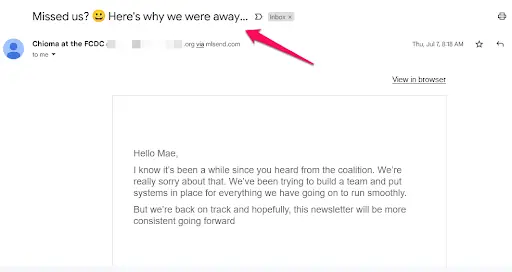
Like the FCDC, use short, relatable phrases to converse with your target audience. This would pique their curiosity and reduce the bounce rate.
Ask Compelling Questions
Ask relevant questions in your subject lines to further spark your reader's curiosity. However, tailor it to the reader’s buyer persona and suggest it as a solution to their challenge. This encourages members to read your email content and take action.
Avoid Spam Words
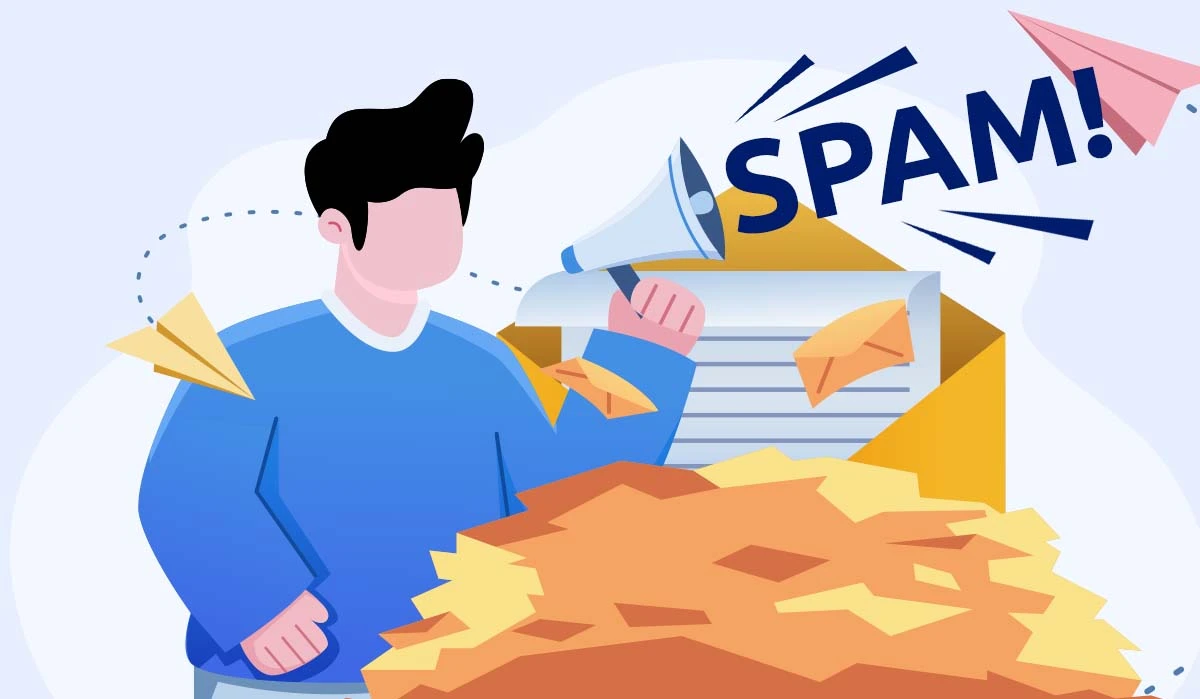
While adding target keywords is essential, avoid coming off as salesy in your email subject lines. It keeps your emails away from the spam folder and establishes relevance instead.
Determine the purpose of your email. It’ll serve as a foundation for brainstorming email subject line ideas.
You also need to personalize your subject lines for increased rapport. Email subject personalization reduces email bounce rates and increases your chances of conversions. After all, who doesn’t want to read an email that’s clearly intended for them, based on the email’s subject line?
2. Personalize Your Email Body
Speaking of personalizing subject lines, you need to personalize your email body, too. Personalized email content creates custom experiences for different association members than regular emails. That’s why 62 percent of marketers say it’s the most effective email marketing service for conversion. To engage your members, show them you’re aware of their achievements by marking milestones like anniversaries, and birthday emails, sending holiday greetings, or welcoming them into the association. Here’s how the Mentoress Collective welcomes new members to their association:
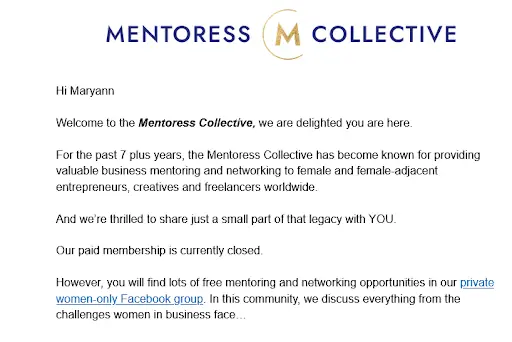
The above email campaign enhances the Collective’s member engagement and gives them reasons to look forward to their email content.
Read more: 20 Creative New Member Orientation Ideas for Onboarding
When sending emails, make sure your email body uses the recipient’s name, too. It’s just like the subject line. If your association member feels like the email was intended for them, they’ll read through your entire email.
3. Segment Your Email List
We’ve talked about personalizing the subject line and the email body. But the question is, how exactly can you do this personalization? This is where email list segmentation comes in.
Segmenting your lists means breaking your email recipients into smaller groups so you can send them personalized email content and subject lines.
To segment your email list, it’s crucial to create surveys. You can include the survey, not just in your email sent to your club and association members, but in your other marketing platforms as well. Any available data is enough to create a segmentation list. However, consider the following data, too:
Demographics Data
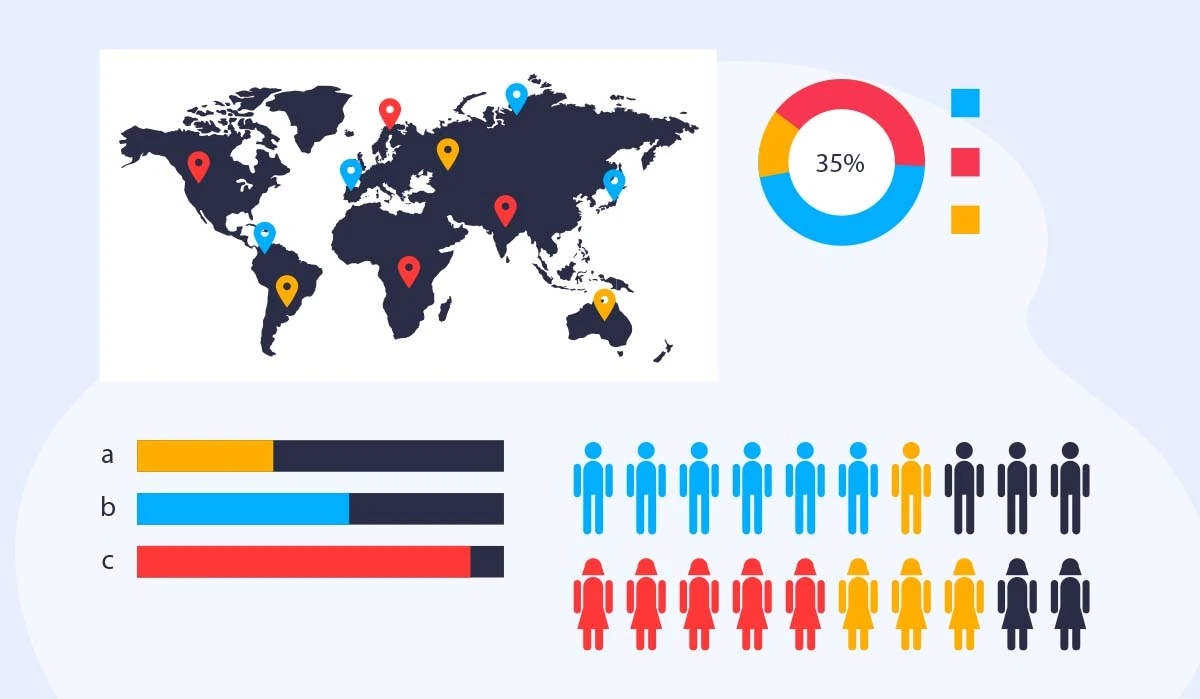
Demographic data includes any relevant personal characteristics of your potential customers, like gender, age, or income level.
To get the necessary data, ensure members fill in their demographic data on your website forms like this:
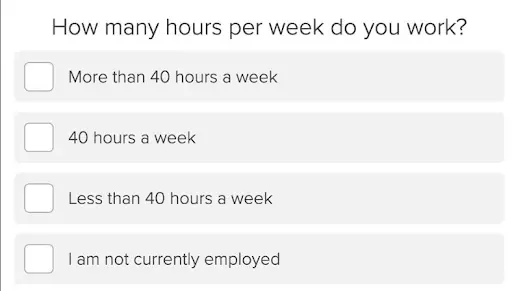 Source
Source
Or, send out surveys to your audience and loyal members. Further interest them by incentivizing the completion of these surveys. This would allow you to get the required demographic details and members’ preferences.
Read more: 30+ Membership Survey Questions that Increase Overall Satisfaction
Behavioral Data
As business owners, it’s imperative to understand why customers patronize your service and other services they might require.
You can use this information to curate various subscriber lists. How do you find this information? Through purchase histories or buyers' wishlists. It gives you an idea of what members want.
Also, gauge your audience’s interest level. If they respond to certain email content, it becomes easier to segment them with the interests shown.
Sales Funnel
Segmenting your list by your audience position in the membership funnel is one of the most effective email marketing strategies.
Why? Because it becomes easy to target and send different types of content to engaged subscribers at different stages of the member journey. For example, a potential association member at the bottom of the funnel should receive emails that describe your services and cause them to convert.
Whereas people who just signed up should receive welcome emails because they’re at the awareness stage.
Email segmentation is best for identifying and reeling back inactive subscribers. Once you identify a segment of your list with loads of inactive subscribers, create a re-engagement campaign to entice them. These can be discounts or exclusive deals for reviving members' interest.
4. Include Images
Where’s the fun of creating bland text-only emails when you can captivate your audience with visuals?
Using the right image in an email campaign is essential to grab readers' attention easily and quickly. While this digital marketing strategy already creates an equilibrium between texts and compelling images, your images must still look professional.
How do you achieve this? Use high-quality images. Your images must be clear; not blurry or pixelated. The best image size for email campaigns is 600-650 pixels. This size ensures your images won’t stretch out and become blurry when sent. Plus, bold images are sure to catch your members' attention.
Choose a consistent format as you optimize images in your email, and avoid sending images with large file sizes. It prevents emails from loading slowly when sent out to recipients.
Finally, avoid sending image-only emails. Since they’re hardly accessible, they’re regarded as spam content. This only means one thing — low open and bounce rates.
Instead, strike a balance between your image and text ratio. The best way to do this is by using templates, luckily there are a lot of free email templates available online.
You don’t have to use real images all the time. You can use vector graphics and icons as well. However, make sure you don’t just use them randomly. They should supplement your text.
5. Make Your Emails Mobile-Friendly

Since 81 percent of readers use a mobile device to open emails rather than desktop, optimizing the email marketing strategies for both platforms is crucial.
To make emails mobile-friendly, do the following:
Use Short Subject Lines
Your email subject lines must neither be too short nor long. With regular email client reports, you can have ideas of your subscribers' devices and tailor your content to satisfy these reports.
Read more: 8 Ways to Use Content to Acquire and Engage Your Members
Since pre-header text lengths vary, split-test both subject lines and text lengths to align with different audience segments, devices, and preferences.
Reduce Email Size
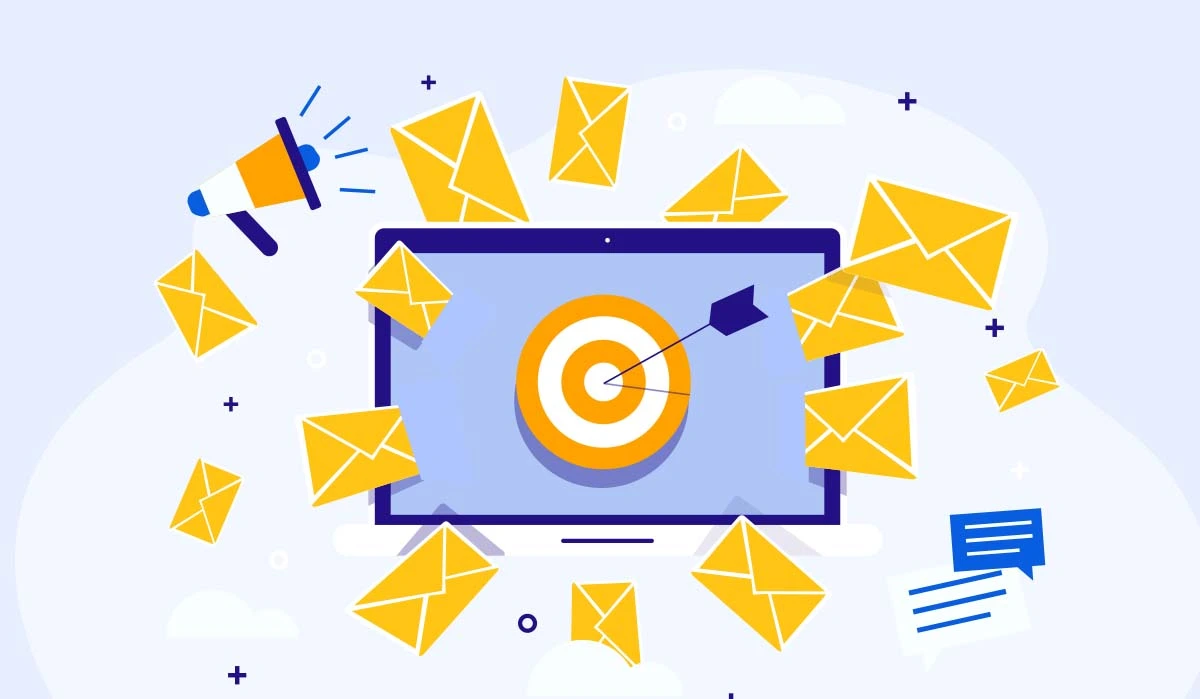
Although it’s tempting to add images, animations, or gifs to email content to turn prospects into members, making it too long can discourage potential members from reading. So make emails concise and clear with images and emphasize larger fonts.
Ensure Call-to-Action Buttons Have Right Sizes
To convert prospects into club and association members, include CTAs that’d prompt readers to take action. But you have to make sure they’re also clearly visible when seen from a small mobile device. After all, how can people take action if they can’t see the CTA button in the first place?
Leverage White Space
To make your content more readable; use white space. It’d make your content easier to navigate and guide viewers to notice the right features at any time.
Use paragraphs, lists, and bullet points to space texts, even in non-promotional emails, and improve communication.
Even when you’re just sending your club’s or association’s contact information via email, your email should still be mobile-friendly. For this, your best bet is to use a digital business card.
Also, for digital business cards, optimize images for accessibility by adding alternative texts. That way, email subscribers who can’t view these images have an idea of what you’re describing with simple text snippets.
6. Send Automated Emails

Email automation lets you send timely emails to your association members, helping you save time and effort you can use to scale your marketing efforts. To effectively send automated emails, set up different triggers and align messages for every member’s action.
With an automation tool like Glue Up campaign builder, you can automate email sequences to take repetitive tasks off your radar.
For example, MCNEESE Alumni Association uses automated bulk emails to welcome members:
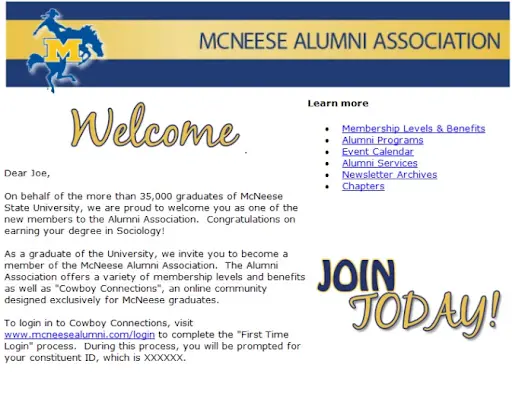 Source
Source
This above email is triggered when new users sign up for the Alumni association. All you need to do is set your automatic email at different times to send the perfect message without getting involved manually.
7. A/B Test Your Emails
Just make sure you don’t A/B test too many variables in a single test run. If you do this, you might be unable to determine what variable caused your email campaign to improve.
A/B testing allows you to see which email variations perform better in terms of key metrics like open rates, click-through rates, and conversion rates. By analyzing these metrics, you can determine the most effective elements for your emails and improve your overall email marketing strategy.
Sticking to testing just one thing at a time in your email A/B tests keeps things clear. This way, you can easily see which change actually improves your email marketing performance and results, like open rates, clicks or leads, and which ones don't.
To set up an A/B testing campaign, choose a variable type like subject lines and send different email templates to recipients. The examples below aren’t club or association emails but they give you an idea of how your A/B testing email campaign should look:
Apart from subject lines, you can send several versions of your email content to see which gets more engagement. This content should include calls to action or the recipient’s email address. You can also send the same emails to customers at different times. This will help you determine the perfect time to send content for future campaigns.
If you need to, hire project managers to oversee these tests. These project managers will help ensure everyone in your team meets deadlines. After all, for your A/B tests to run smoothly, you need your different email variations to be completed around the same time.
8. Analyze Your Results
You need to use a holistic approach to determine actionable insights and strategies that will help improve your email marketing campaign. You need to answer key questions like:
How many people click your link?
Is your email an effective marketing channel?
How often do you get unsubscribers?
Or which email link gets the most click?
Having said that, some metrics you need to track are
Open Rate: This gives you an accurate estimate of email recipients who open your emails.
Click-through Rate: The percentage of subscribers who click on action buttons you add to your emails determine your click-through rate. This metric gives an idea of subscribers' engagements and if members are interested in your content.
Bounce Rate: The bounce rate calculates the number of emails that fail to deliver to email recipients. It is advised to keep a good bounce rate under 2%.
To avoid bounces, use double opt-in whenever subscribers sign up. It will reduce the chances of having incorrect email addresses in your database, making optimizing your campaign to align with members easy.
Read more: 10 Ways to Create Better Marketing Campaigns Through CRM
Other Important Email Marketing Strategies
9. Send Welcome Emails to New Members
Welcome emails, on average, have a 4x higher open rate and a 5x higher click-through rate than standard email marketing campaigns (Wordstream).
When a new member joins your association, make them feel welcomed and appreciated by sending a personalized welcome email.
Introduce your association, highlight membership benefits, and provide information on how they can get involved. As a welcome gift, consider offering a special discount or exclusive resource.
10. Send Re-engagement Emails to "Lost" Members
Over time, some members may become less active or stop engaging with your association altogether.
To bring them back, send a re-engagement email campaign. Remind them of the value they receive from being a member and the impact they can make by staying involved. As Tom Fishburne, the founder and CEO of Marketoonistonce said, "The best marketing doesn't feel like marketing."
11. Send Membership Renewal Reminders
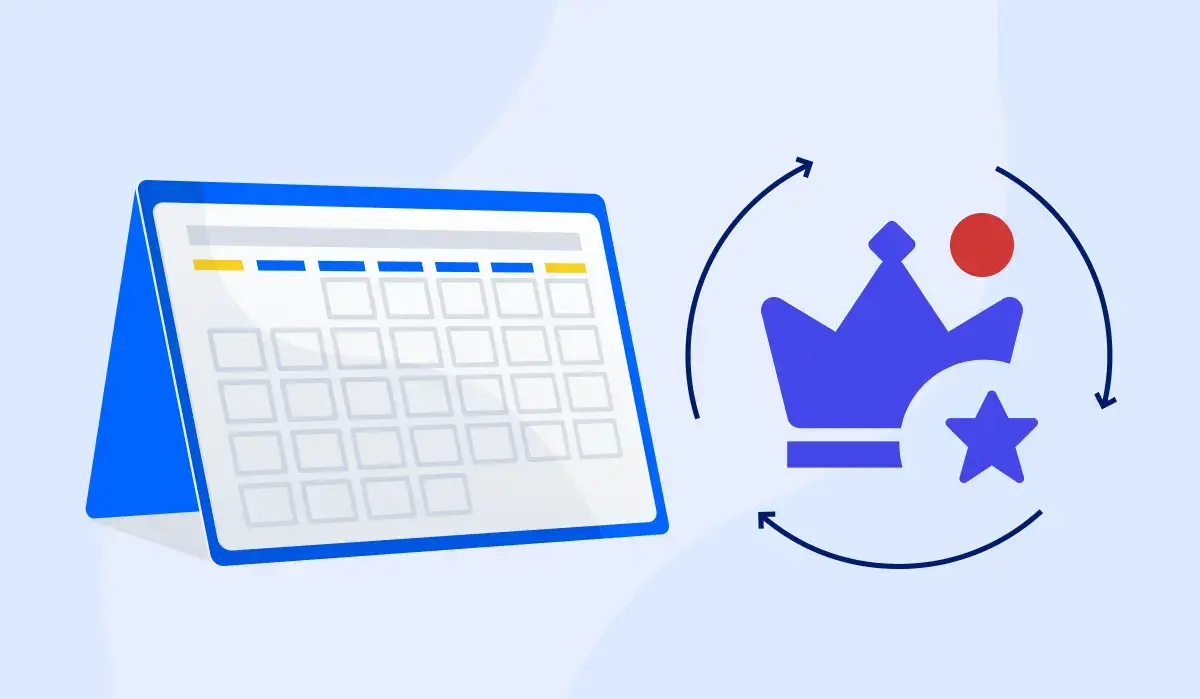
Membership renewals are crucial for the sustainability of your association. However, sending a personalized renewal reminder to each member may sound like alot of work. Thus, it's better to automate them using specialized email marketing software for associations.
Start sending renewal reminders via email a few months before their membership is set to expire. Remind them of the value they receive from being a member and make the renewal process easy by providing a clear call-to-action and a link to renew online.
As Zig Ziglar mentions, "You don't build a business. You build people, and people build the business."
12. Pay Careful Attention to Timing
Timing is everything when it comes to email marketing.
Make sure to send your emails at a time when your members are most likely to open up and engage with them. This may vary depending on your audience, so it's essential to test different times and days to see what works best.
You can also use email automation tools to schedule your emails in advance and ensure that they are delivered at the optimal time.
13. Offer Incentives via Email

Offering incentives is a great way to encourage your members to engage with your association.
You can use email to promote special discounts, early bird pricing for events, or exclusive access to resources.
Make sure to communicate the value of the incentive and how to redeem it.
14. Integrate Your Social Media Links
Social media is a powerful tool for engaging with your members and expanding your reach.
Integrate your social media channels with your email marketing by including social media links in your emails and encouraging your members to follow you on social media.
You can also use social media to promote your email campaigns and drive more subscribers to your email list.
15. Give Opportunities for Feedback
Finally, it's essential to give your members opportunities to provide feedback on your email marketing and your association as a whole.
You can include a survey or poll in your emails to gather feedback on specific topics or ask for general feedback on how you can improve.
By giving your members a voice, you show that you value their opinions and are committed to making their experience with your association the best it can be.
What is Better for Association Email Marketing? AI-Powered AMS or Email Marketing Software?
When it comes to email marketing for associations, AI-powered Association Management Software (AMS) is the clear winner over standalone email marketing software.
An AMS offers a comprehensive, data-driven approach to member engagement that goes beyond simple email campaigns. By leveraging integrated member data, an AI-powered AMS can create highly targeted and personalized email content that resonates with each member's interests and preferences.
Moreover, the AI can automate various tasks, such as segmentation, content creation, and send-time optimization, saving valuable time and resources for the association's staff.
Glue Up is the first global AI-powered AMS that offers a wide range of features and tools designed specifically for associations. These features include personalized email campaigns, predictive analytics, automated workflows, and a comprehensive view of member engagement across various channels.
By leveraging the power of AI, you can streamline your operations, save time and resources, and ultimately improve member engagement and satisfaction.
If you're interested in exploring the benefits of an AI-powered AMS for your association, consider requesting a demo to better understand how such a system can be tailored to your specific needs and goals.
FAQs
1. What is email marketing for memberships?
Email marketing for memberships involves using email campaigns to engage, retain, and grow your membership base. It allows you to communicate directly with your members, providing them with valuable content, updates, and exclusive offers.
Engaging members with targeted email campaigns is a proven strategy to strengthen relationships, foster loyalty, support membership renewals, and grow your organization's membership base.
2. What are the best practices for association email marketing?
Some best practices for email marketing include:
- Build a targeted email list with permission-based opt-ins
- Segment your list based on subscriber preferences and behaviors
- Create compelling subject lines to increase open rates
- Provide valuable, relevant content that resonates with your audience
- Optimize your emails for mobile devices
- Include clear calls-to-action (CTAs) to encourage engagement
- Test and analyze your campaigns to improve performance
3. How can I build a membership email list?
To build a membership email list, consider the following strategies:
- Offer valuable lead magnets, such as exclusive content or resources, in exchange for email addresses
- Add opt-in forms to your website, blog, and social media profiles
- Encourage current members to refer friends and colleagues
- Collaborate with complementary businesses or organizations to cross-promote and expand your reach
- Attend industry events and collect email addresses from interested prospects
- Run social media contests or giveaways that require an email address to enter
4. What is marketing automation in email campaigns?
Marketing automation in email campaigns refers to using software to automate repetitive email marketing tasks. It allows you to create targeted, personalized email sequences that are triggered by specific subscriber actions or preferences.
Examples include welcome series for new subscribers, birthday or anniversary greetings, and abandoned cart reminders for e-commerce. Email automation aims to help you save time, improve efficiency, and deliver more relevant content to your subscribers.
5. How can I improve my email campaigns' open and click-through rates?
The best way to improve your email campaigns' open rates and click-through rates is to start by writing compelling subject lines that create a sense of urgency or curiosity, enticing readers to open your emails. Personalizing the preview text and email content is another way to entice interest in your audience.
6. Why is it important to segment your email list?
Segmenting your email list is important because it allows you to send targeted, relevant content to each subscriber group based on their interests, preferences, or behaviors. Thus, it helps you improve email engagement rates, such as opens, clicks, and conversions.
Segmenting emails also enables you to optimize your email marketing return on investment (ROI) by focusing on the most receptive and profitable segments. Thus, avoid over-saturating your subscribers with irrelevant content, which can lead to unsubscribes or spam complaints.
Author Bio: Michal is immersed in developing, implementing, and coordinating all manner of content marketing projects as the Head of Content & Partnerships at GetResponse. He has 10-plus years of expertise in online marketing with a Master of Science Degree in Strategic Marketing and Consulting from the University of Birmingham (UK). Michal is the author of more than 100 articles, ebooks, and courses for both GetResponse and renowned websites like Crazy Egg and Social Media Today.
